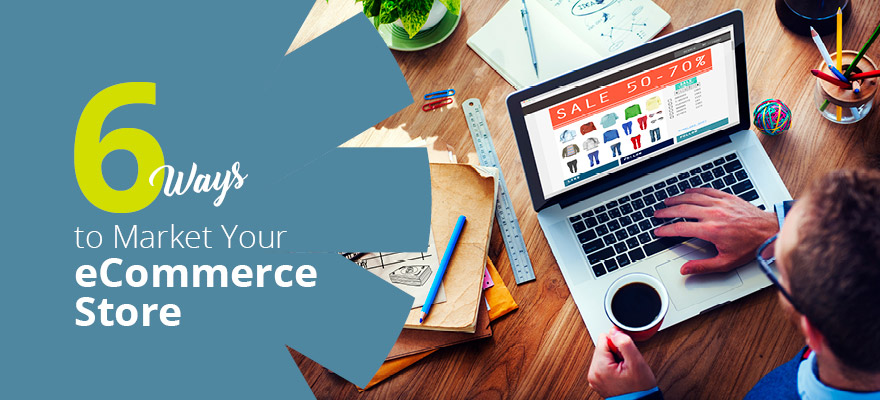You have built the ecommerce store of your dreams, but merely hoping customers will appear out of the blue is a recipe for failure. To succeed, you need to maximise your coverage and exposure, but with so many avenues across the online world, how do you determine which ones will raise your store’s profile?
1. Invest in SEO
It might be the elder statesman of the digital market, but SEO is still king. Invest smartly or heavily, depending on your budget and SEO expertise, to boost your rankings. Follow the SEO rules of fast-loading pages, mobile focus, good content relevance, keywords, search terms and tags to optimize your site for Google and other search engines.
By building an SEO-friendly store, you enable any customer or business to find the right products and link directly to your product pages. Without that effort, you end up relying on narrower avenues to find customers, and your rivals with good SEO will simply outsell and reduce you to irrelevance.
2. Pay For High-Value Advertising
While the tidal trends in advertising are changing fast, long term advertising remains a key way to promote your business. With market-relevant adverts, local or regional promotion and offers of value or interest, your store can capture a wide audience of relevant customers.
Look for search adverts, PPC and social media avenues that align with your customers and focus on strategic advertising. Use AdWords or dedicating advertising engines that can provide the granularity and detail you need.
Don’t throw money at adverts but plan every campaign and if your business lacks advertising experience, get experts to do the detailed work for you. Be nimble with your campaigns, and focus on seasonal or event-based sales to keep your products relevant to buyers – don’t just rely on a campaign that worked once to bring in customers forever.
Say Goodbye to Passwords
and
Hello to Secure Logins.
Go passwordless and delight your users with secure and seamless one-click login.
3. Go Where the Markets Are
If you want to spread your store efforts, Amazon and eBay aren’t the only outlets in town. Instagram Shopping has a store feature for visually appealing products, allowing easy purchase as people browse images of the fashions or products they are most interested in. It, along with Google Marketplace and Facebook Marketplace, are creating new ways to promote and sell, and bring your store to a new audience.
Trial your diversifying store efforts to see what products work on which sites. Build on success and be prepared to build stories or pages around the products that fit the native sites better. Instagram in particular is best served with glamour shots to help sell custom or stylish products in a clear post design that looks less like typical stores, making it feel more like you’re browsing a luxury retailer than marching down the shelves of a market.
For any business where shopping cart abandonment is an issue, trying a different tactic with the store front can produce great rewards. All while focusing on store speed, accurate information and enticements to get the customer buying.
4. The Reward of Reviews and Content
If you sell custom, designer, bespoke or rare products, getting them reviewed on prominent sites will provide a major boost in store visitors and buyers. Find influencers within your market, or look for traditional sites that cover your product ranges. Be prepared to give away free samples, early looks at new products and prize giveaways to drive interest and get people talking about what’s in your store.
If reviews aren’t appropriate or useful for your store, focus on getting your products mentioned in news, opinion pieces or articles and other web content to provide a stream of visitors. Check rivals to see how they handle outreach and coverage and don’t be afraid to mimic their successful tactics.
You can also create your own content, such as user guides, productivity pieces, product tour videos and so on. Marketing your own content provides an additional way to spread the word about the store and provide product information outside the usual data or feature lists.
5. Build a Store App
As your customers move to mobile devices, you need to be accessible to them. Apps can be developed in a bespoke manner if needed, or for a rapid solution, progressive web apps (PWAs) replicate the web store in app form, with advanced features above the usual browser experience and an icon on the customer’s device home page just like any app.
The app gives you further marketing push, a new feature to link to and puts you on the screens of more customers who are more likely to launch an app than they are find your store in an email or a bookmark link.
Apps can feature coupons or loyalty points to help build stickiness, and faster checkout and better cart management features to speed up shopping. These can build up and be used in email messaging and other forms to encourage people to spend them and make repeat visits to the store. And, as the majority of people adopt a mobile-first digital life, your store will be there when they need you.

1-Click Login is a simple & secure password-free authentication service.
With our patented technology, your website can improve security & increase customer conversion by removing passwords.
6. Remember the Details in Marketing
Any feature your store offers needs to be promoted in your marketing, from the deals and bargains themselves to extras like free delivery and gift wrapping. While they might sound like features that everyone takes for granted, if a prospective customer doesn’t see them, they will more likely go for a store that mentions them loud and proud.
Whatever the size of your business, focusing on one or all of these methods will help raise awareness of your store, boost sales and revenue. The focus and detail of each effort may be unique to your products, but used in concert with careful marketing strategy and planning, they will help you win against competitors.
Author Bio
Izaak Crook is the Content Marketing Manager at AppInstitute, a SaaS App Builder platform that allows anyone to create their own iOS and Android app without writing a single line of code.




